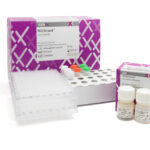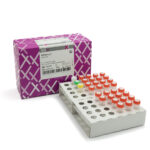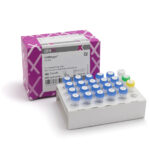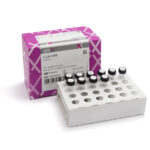Chimerism Monitoring; ensuring transplant success
Chimerism monitoring plays a crucial role in evaluating the success and progress of hematopoietic stem cell transplantation (HSCT). This technique allows healthcare professionals to assess the degree of donor and recipient cell coexistence, aiding in the early detection of potential complications.
Chimerism refers to the coexistence of cells with different genetic backgrounds within an organism. In the context of HSCT, chimerism monitoring involves analyzing the ratio of donor and recipient cells in a patient’s blood or bone marrow post-transplantation. By assessing chimerism levels, healthcare providers gain valuable insights into engraftment, graft rejection, relapse, and other critical aspects of the transplant process.
The importance of chimerism monitoring:
- Engraftment evaluation: Chimerism monitoring allows clinicians to determine the successful engraftment of donor cells in the recipient’s body. Early detection of inadequate engraftment can help identify potential complications and guide appropriate interventions promptly.
- Graft rejection detection: Monitoring chimerism levels aids in identifying graft rejection, a condition in which the recipient’s immune system attacks and rejects donor cells. By detecting rejection early, healthcare providers can intervene with appropriate immunosuppressive therapies to prevent graft failure.
- Relapse prediction: Chimerism monitoring plays a vital role in predicting disease relapse after transplantation. A decline in donor cell percentage or an increase in recipient cell percentage may indicate relapse, enabling timely intervention such as targeted therapy or immunomodulation.
- Treatment adjustment: Chimerism monitoring helps clinicians assess the effectiveness of treatment protocols and adjust therapies accordingly. By closely monitoring chimerism levels, healthcare professionals can make informed decisions about modifying immunosuppressive medications or intensifying post-transplant treatments.
Techniques in chimerism monitoring:
Advanced techniques have revolutionized chimerism monitoring, enhancing its accuracy and reliability. They include:
- Quantitative Polymerase Chain Reaction (qPCR): qPCR allows for the precise measurement of DNA markers specific to donor and recipient cells, enabling quantification of chimerism levels with high sensitivity.
- Next-Generation Sequencing (NGS): NGS enables high-throughput analysis of genetic material, providing detailed information about chimerism levels and identifying minor genetic variations.
- Fluorescence In Situ Hybridization (FISH): FISH utilizes fluorescent probes to detect and visualize specific DNA sequences, aiding in the assessment of chimerism at the cellular level.
Chimerism monitoring is an invaluable tool in the field of HSCT, enabling healthcare professionals to evaluate engraftment, detect graft rejection, predict relapse, and optimize treatment strategies. By closely monitoring chimerism levels using advanced techniques such as qPCR, FISH, and NGS, clinicians can ensure transplant success and improve patient outcomes.
HLA loss
HLA loss, or human leukocyte antigen loss, is a well-documented phenomenon observed in various contexts such as cancer and transplantation. It refers to the downregulation or complete loss of expression of specific HLA molecules on the surface of cancer cells or transplanted tissues. HLA molecules are critical for immune recognition and play a crucial role in presenting antigens to immune cells, thereby eliciting immune responses. However, HLA loss enables cancer cells or transplanted tissues to evade immune surveillance and escape immune-mediated destruction. Multiple mechanisms contribute to HLA loss, including genetic alterations, epigenetic modifications, and immunoselective pressure within the tumor microenvironment. This loss of HLA expression poses significant challenges for cancer immunotherapy and transplantation outcomes. Efforts are being made to understand the underlying mechanisms of HLA loss and develop strategies to overcome immune evasion, ultimately improving patient outcomes.
References:
- Bader P, et al. Monitoring of donor chimerism in sorted CD34+ peripheral blood cells allows the sensitive detection of imminent relapse after allogeneic stem cell transplantation. Haematologica. 2008;93(8):1114-7.
- Bertaina A, et al. Chimerism-based pre-emptive immunotherapy with fast withdrawal of immunosuppression and donor lymphocyte infusions after allogeneic stem cell transplantation for pediatric hematologic malignancies. J Clin Oncol. 2014;32(31):4150-60.
- Chowell D, et al. Evolutionary divergence of HLA class I genotype impacts efficacy of cancer immunotherapy. Nat Med. 2019;25(11):1715-20.
- D’Souza A, et al. Chimerism analysis and outcomes after allogeneic transplantation for myelofibrosis. Biol Blood Marrow Transplant. 2016;22(2):330-7.
- Garrido F, et al. HLA class I alterations in human cancer: impact on tumor progression and immunotherapy. Cancer Immunol Immunother. 2019;68(5):899-912.
- Leung W. Use of chimerism studies to monitor engraftment after allogeneic hematopoietic stem cell transplantation in pediatric patients. Biol Blood Marrow Transplant. 2016;22(4):602-8.
- Miltenyi Biotec. Chimerism Analysis. Available at: https://www.miltenyibiotec.com/US-en/products/macs-flow-cytometry/applications/chimerism-analysis.html. Accessed on 7th June 2023.
- McGranahan N, et al. Allele-specific HLA loss and immune escape in lung cancer evolution. Cell. 2017;171(6):1259-71.e11.
- Rammensee HG, et al. HLA ligands and tumor peptide targets of NKG2D-restricted immune responses. Semin Cancer Biol. 2006;16(5):409-16.





